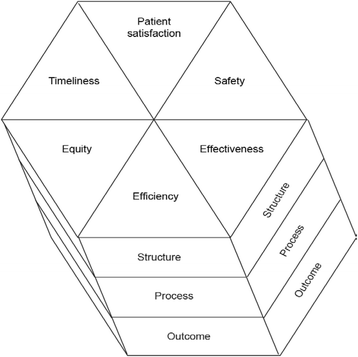Developing quality indicators for physician-staffed emergency medical services: a consensus process
- PMID: 28202076
- PMCID: PMC5311851
- DOI: 10.1186/s13049-017-0362-4
Developing quality indicators for physician-staffed emergency medical services: a consensus process
Abstract
Background: There is increasing interest for quality measurement in health care services; pre-hospital emergency medical services (EMS) included. However, attempts of measuring the quality of physician-staffed EMS (P-EMS) are scarce. The aim of this study was to develop a set of quality indicators for international P-EMS to allow quality improvement initiatives.
Methods: A four-step modified nominal group technique process (expert panel method) was used.
Results: The expert panel reached consensus on 26 quality indicators for P-EMS. Fifteen quality indicators measure quality of P-EMS responses (response-specific quality indicators), whereas eleven quality indicators measure quality of P-EMS system structures (system-specific quality indicators).
Discussion: When measuring quality, the six quality dimensions defined by The Institute of Medicine should be appraised. We argue that this multidimensional approach to quality measurement seems particularly reasonable for services with a highly heterogenic patient population and complex operational contexts, like P-EMS. The quality indicators in this study were developed to represent a broad and comprehensive approach to quality measurement of P-EMS.
Conclusions: The expert panel successfully developed a set of quality indicators for international P-EMS. The quality indicators should be prospectively tested for feasibility, validity and reliability in clinical datasets. The quality indicators should then allow for adjusted quality measurement across different P-EMS systems.
Keywords: Modified nominal group technique; Physician-staffed emergency medical services; Quality indicators.
Figures
Similar articles
-
Quality measurement in physician-staffed emergency medical services: a systematic literature review.Int J Qual Health Care. 2019 Feb 1;31(1):2-10. doi: 10.1093/intqhc/mzy106. Int J Qual Health Care. 2019. PMID: 29767795 Free PMC article.
-
Telemedical support for prehospital Emergency Medical Service (TEMS trial): study protocol for a randomized controlled trial.Trials. 2017 Jan 26;18(1):43. doi: 10.1186/s13063-017-1781-2. Trials. 2017. PMID: 28126019 Free PMC article. Clinical Trial.
-
Prioritizing performance measurement for emergency department care: consensus on evidence-based quality of care indicators.CJEM. 2011 Sep;13(5):300-9, E28-43. doi: 10.2310/8000.2011.110334. CJEM. 2011. PMID: 21955411
-
Testing quality indicators and proposing benchmarks for physician-staffed emergency medical services: a prospective Nordic multicentre study.BMJ Open. 2019 Nov 3;9(11):e030626. doi: 10.1136/bmjopen-2019-030626. BMJ Open. 2019. PMID: 31685504 Free PMC article.
-
A Delphi study to identify performance indicators for emergency medicine.Emerg Med J. 2004 Jan;21(1):47-50. doi: 10.1136/emj.2003.001123. Emerg Med J. 2004. PMID: 14734375 Free PMC article. Review.
Cited by
-
Prehospital response to respiratory distress by the public ambulance system in a Ukrainian city.World J Emerg Med. 2019;10(1):42-45. doi: 10.5847/wjem.j.1920-8642.2019.01.006. World J Emerg Med. 2019. PMID: 30598717 Free PMC article.
-
Quality measurement in physician-staffed emergency medical services: a systematic literature review.Int J Qual Health Care. 2019 Feb 1;31(1):2-10. doi: 10.1093/intqhc/mzy106. Int J Qual Health Care. 2019. PMID: 29767795 Free PMC article.
-
Analgesia in adult trauma patients in physician-staffed Austrian helicopter rescue: a 12-year registry analysis.Scand J Trauma Resusc Emerg Med. 2021 Feb 1;29(1):28. doi: 10.1186/s13049-021-00839-9. Scand J Trauma Resusc Emerg Med. 2021. PMID: 33526048 Free PMC article.
-
Short-term and long-term survival in critical patients treated by helicopter emergency medical services in Finland: a registry study of 36 715 patients.BMJ Open. 2021 Feb 23;11(2):e045642. doi: 10.1136/bmjopen-2020-045642. BMJ Open. 2021. PMID: 33622956 Free PMC article.
-
Medico-economic study of pain in an emergency department: a targeted literature review.J Mark Access Health Policy. 2019 Sep 13;7(1):1659099. doi: 10.1080/20016689.2019.1659099. eCollection 2019. J Mark Access Health Policy. 2019. PMID: 31552134 Free PMC article.
References
MeSH terms
LinkOut - more resources
Full Text Sources
Other Literature Sources
Medical


